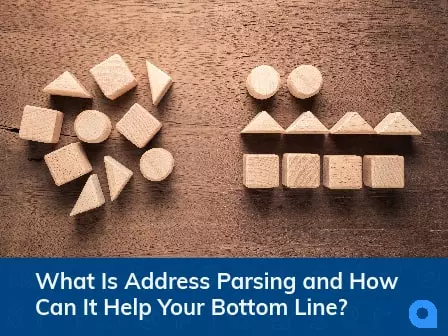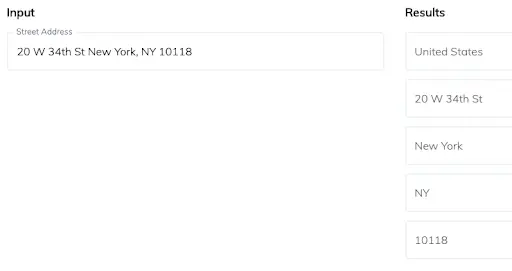
Our global economy comprises many industries—healthcare, financial services, insurance, commercial development, and more. But one thing all companies have in common, no matter the industry? They’re all chasing a bigger and better return on investment (ROI).
While there are many drivers of ROI, have you ever considered the role that address validation plays?
Clean address data is essential for many business functions. Consider eCommerce, one rapidly growing example. Forecasting shows this retail channel will account for 22 percent of all global retail sales by 2024.
Accurate address data helps eCommerce businesses reduce failed deliveries, cut down on shipping costs, prevent correction fees, and improve the customer experience.
In our free ebook, 4 Steps to Unlocking Latent Revenue and Driving ROI with Your Address Data, we dig into how you can use your company’s address data to unlock latent revenue and drive ROI. The first step is address parsing.

In this article, we’ll explain what address parsing is and how it can help your bottom line.
Address parsing is the process of breaking an address into its component parts (house number, street name, city, etc.).
Addresses, and the way people write them, are all over the map—pun intended.
As tallied up by the USPS, there are 502 "commonly used" street suffixes or abbreviations, which means your users have a lot of creative license when writing an address to one single location. To keep your address data clean, you need to take all those messy addresses and standardize and validate them before they find a home in your database. Step 1: address parsing.
How to Parse an Address
Take this address: 20 W 34th St., New York, NY 10001
When you break it up into its component parts, you get:

Now, you could use separate form fields in your online form to make the end user do the work of breaking up the address into its individual parts. But what kind of user experience does that offer your customers?
Clicking or tabbing from form field to form field is irritating enough on a desktop, but try doing that on your cell phone? That’s a recipe for frustrated customers and bad address data getting entered into your system.
More than 67% of site visitors will abandon your form forever if they encounter any complications, according to WPforms.com.
The easier your forms are to complete, the more people submit them, boosting your conversion rates and revenue, while cutting the costs associated with bad data.
Address validation that allows single box address entry provides the easy experience your users are looking for. This one factor alone can not only justify investing in address validation but also make such services one of your best ROI business opportunities.
However, not all address validation providers parse the inputted address, and some only do limited parsing. When choosing an address validation provider, make sure that service includes address parsing.
From Address Parsing to Address Autocomplete
Address autocomplete stems from address parsing. This magical feature can be experienced when typing into Google to get directions to the closest Panera or when typing in your brother’s shipping address so you can prank him with a glitter bomb. Not that we condone the latter, of course…
Address autocomplete accepts and predicts addresses in a single field that can be automatically parsed by your address validation service as a part of the input or output.
Parsing at Input
1. The user starts filling out an address,
2. Then selects a predicted address from the dropdown, and
3. The address is parsed into the fields visible on the screen to the user.
Parsing at Output
1. The user starts filling out the address,
2. Then clicks the address from a displayed drop-down list, meanwhile,
3. The address isn't parsed for the user but is parsed while being stored in the database.
If the address validation software can then break the address into even smaller components, it makes matching easier and more accurate and makes the data more flexible. Much like a toddler playing with different colors of Play-Doh, it’s easier to combine address components than it is to separate them.
Conclusion: Address Parsing Improves Customer Experience and Your Bottom Line
If you’re not parsing addresses, your users have to manually enter addresses as individual components. Doing so increases the time spent entering data, typo probability, and the chances of data ending up in the wrong field. Such errors can lead to potentially bad data. The poor experience can also decrease form conversion rates. All of these circumstances are ones that cut into your potential profits.
Start parsing addresses with Smarty US Address Verification today, or download our free ebook, 4 Steps to Unlocking Latent Revenue and Driving ROI with Your Address Data, to learn more about how address validation impacts your revenue and ROI.

 Sawyer Hendrickson
Sawyer Hendrickson Kiana Andrewsen
Kiana Andrewsen